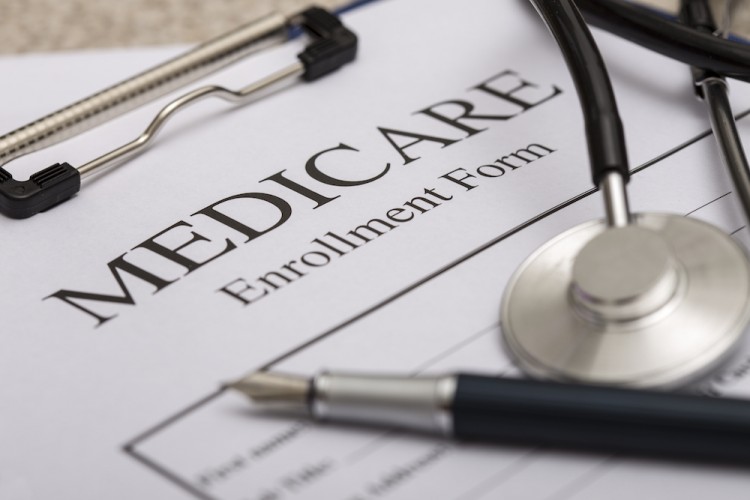This article is part of an ongoing educational series on Medicare presented by the Good Samaritan Society.

Are you turning 65 soon and have no idea where to start with Medicare? If so, you're in the same boat as the 10,000 other folks who turn 65 every day.
You know your health coverage is important, but wading through the murky waters of understanding Medicare can be a daunting task. It doesn't have to be.
Use this step-by-step guide as your starting point.
Some people get Part A and Part B automatically.
If you’re already getting benefits from Social Security or the Railroad Retirement Board (RRB), you’ll automatically get Part A and Part B starting the first day of the month you turn 65. If your birthday is on the first day of the month, Part A and Part B will start the first day of the prior month.
If you’re automatically enrolled, you’ll get your red, white, and blue Medicare card in the mail 3 months before your 65th birthday or 25th month of disability benefits.
If you aren't one of the individuals set to receive Medicare automatically, follow the steps below to learn how to get covered.
You will need to decide which coverage is appropriate for your individual situation. The two basic components of coverage are Medicare Part A and Medicare Part B. Medicare Part A (Hospital Insurance) covers inpatient hospital stays, care in a skilled nursing facility, hospice care and some home health care. Medicare Part B (Medical Insurance) covers certain doctors' services, outpatient care, medical supplies, and preventive services.
Even if you are still working and currently have health insurance from your employer you should still sign up at age 65. If you have paid Medicare taxes for at least 10 years you are entitled to the benefits of the the program. Depending on the type of coverage you currently have, you may choose Part B. Everyone pays a monthly premium for Part B regardless of what you have been paying into Medicare taxes. The premium varies depending on your income and when you enroll in Part B. Most people will pay the standard premium amount of $135.50 in 2019.
There are only certain times when you can enroll in Medicare. Depending on the situation, some people may get Medicare automatically, and others need to apply for Medicare. The first time you can enroll is called your Initial Enrollment Period. Your 7-month Initial Enrollment Period usually:
- Begins 3 months before the month you turn 65
- Includes the month you turn 65
- Ends 3 months after the month you turn 65
The U.S. government has set up a free calculator to help determine your eligibility and when you can enroll. This is the best tool to use to help understand when you can sign up. You will be asked a series of simple questions such as your DOB, citizenship and current level of insurance. Follow this link for access to the Medicare calculator.
It is possible to enroll outside of your initial eligibility period, but If you miss enrollment when you’re first eligible, you may have to pay a Part B late enrollment penalty, and you may have a gap in coverage if you decide you want Part B later.
The Social Security Administration has set up an online form to sign up for Medicare. The process takes less than 10 minutes and once it's submitted, you're done. Social Security will process your application and contact you if they need more information. You will receive your Medicare card in the mail. Apply for Medicare here.
You can use the online Medicare application if you:
- Are at least 64 years and 9 months old;
- Want to sign up for Medicare but do not currently have ANY Medicare coverage;
- Do not want to start receiving Social Security benefits at this time; and
- Are not currently receiving Social Security retirement, disability or survivors benefits.
If you do not wish to use the online enrollment system you can also apply by calling 1-800-772-1213. If you are hard of hearing you can call 1-800-325-0778 You may also make an appointment with your local Social Security office to apply. You can find your local office by entering your ZIP code here.
How does my current insurance work with Medicare?
-
Medicare pays first:
- If you have retiree insurance (insurance from your or your spouse’s former employment).
- If you’re 65 or older, have group health plan coverage based on your or your spouse’s current employment, and the employer has fewer than 20 employees.
- If you’re under 65 and have a disability, have group health plan coverage based on your or a family member’s current employment, and the employer has fewer than 100 employees.
-
Your group health plan pays first:
- If you’re 65 or older, have group health plan coverage based on your or your spouse’s current employment, and the employer has 20 or more employees.
- If you’re under 65 and have a disability, have group health plan coverage based on your family member’s current employment, and the employer has 100 or more employees.
- If you have Medicare because of End-Stage Renal Disease (ESRD)...Your group health plan will pay first for the first 30 months after you become eligible to enroll in Medicare. Medicare will pay first after this 30-month period.
Still have questions? Here are some helpful resources.




